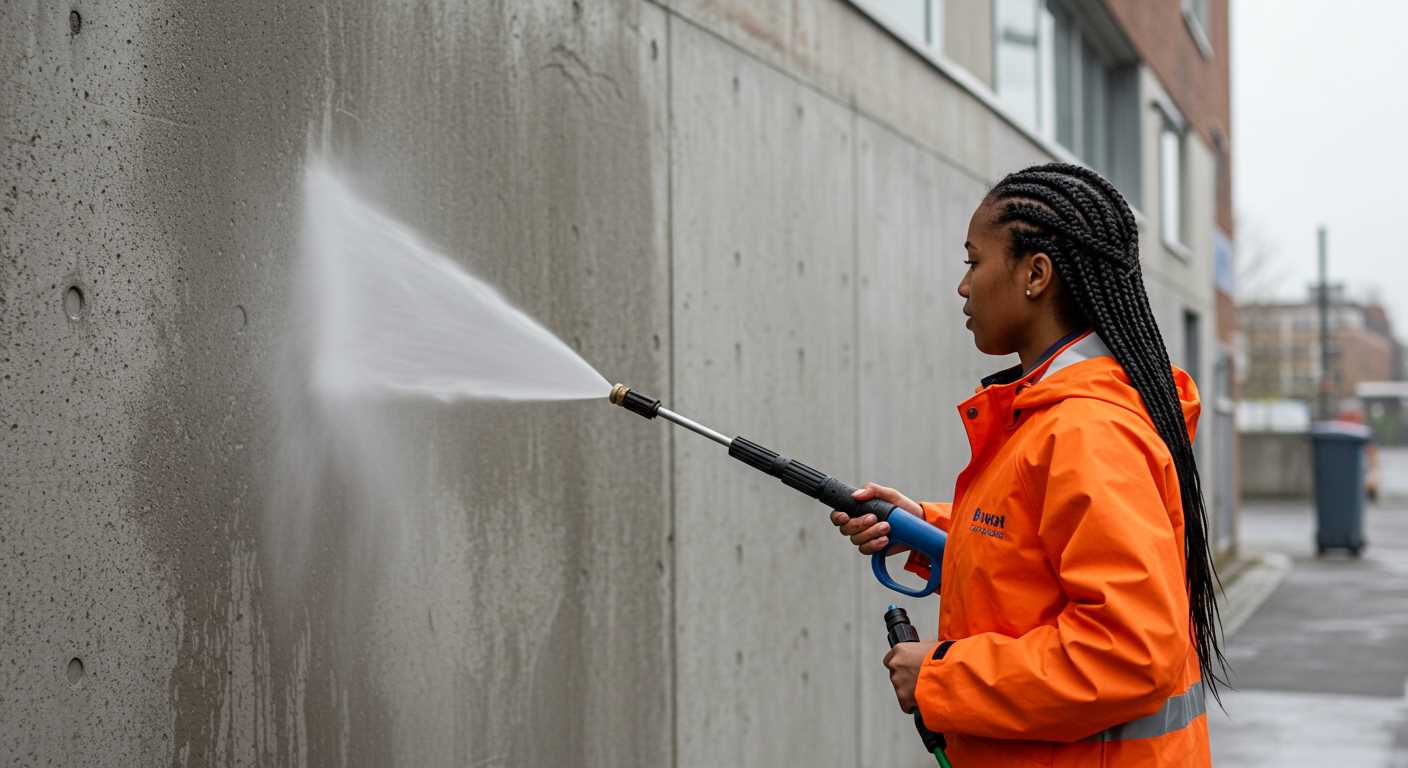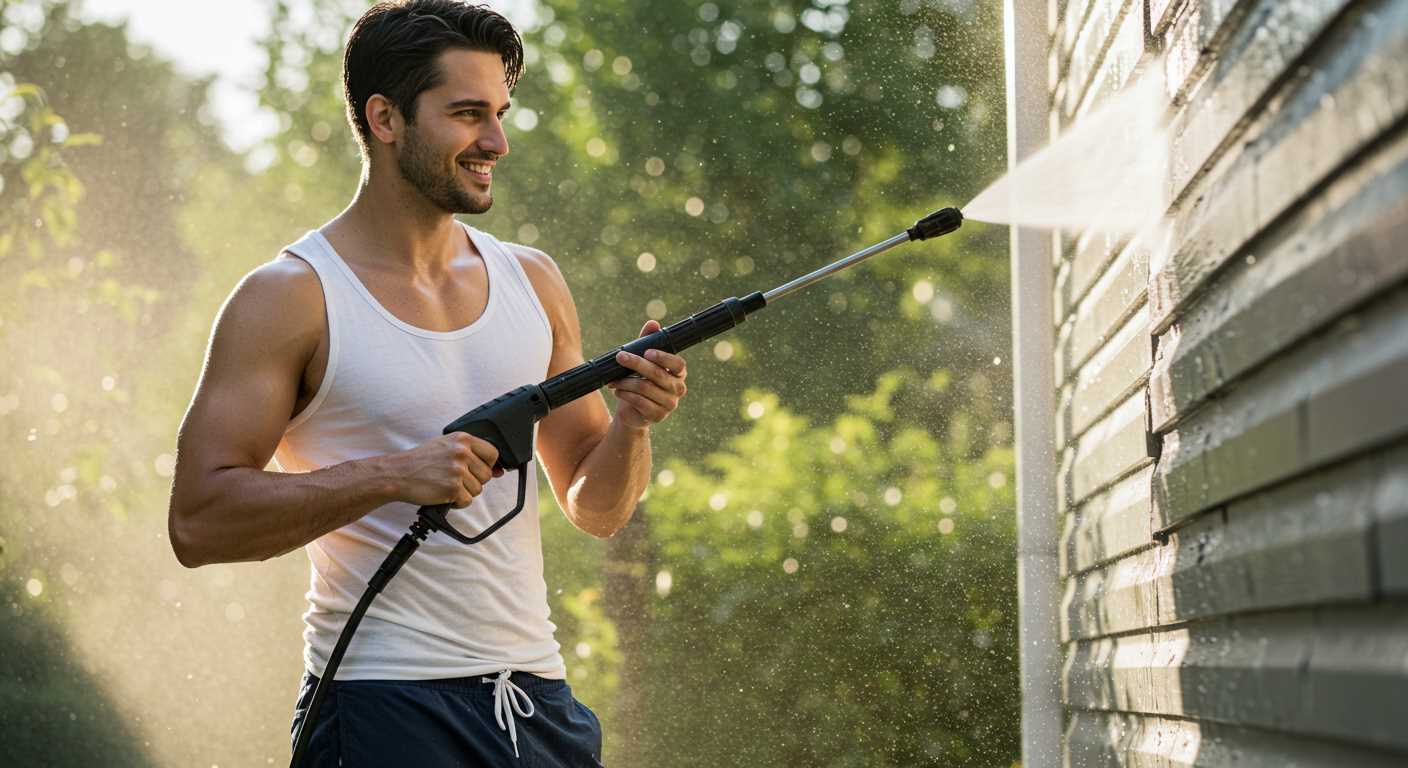



Absolutely, employing a high-pressure device for the maintenance of a gardening structure proves to be highly beneficial. Before diving into the cleaning process, ensure the glass or polycarbonate panels are securely fastened and free from any cracks. It’s prudent to use a fan nozzle, which disperses the force of the water, preventing potential damage to delicate surfaces.
Commence the task by soaking the panels from top to bottom, allowing any dirt or mould to loosen. Adjust the pressure setting to a medium level to avoid any risk of shattering glass or displacing seals. Special attention should be given to the corners and joints, where grime tends to accumulate, making those areas key targets in your cleaning strategy.
After the initial rinse, apply a biodegradable cleaning solution to tackle stubborn stains and algae. Allow it to sit briefly, then return with the high-pressure device for rinsing. This method not only boosts cleanliness but also enhances visibility inside the structure, promoting a healthier environment for plants. Proper maintenance like this contributes significantly to the longevity of the structure and the well-being of the plants within.
Identifying suitable pressure washer settings for greenhouse cleaning
Start with a pressure level of 1000 to 1500 PSI, ideal for delicate structures. Higher pressure risks damage to glass or plastic components. A fan nozzle, particularly 25 or 40 degrees, disperses water effectively without causing harm.
Recommended Settings
- Pressure: 1000-1500 PSI
- Nozzle: 25 or 40-degree fan nozzle
- Distance: Maintain a distance of at least 2 feet from the surface
- Temperature: Use cold or lukewarm water to avoid thermal shock
Additional Tips
- Check the manufacturer’s guidelines for any specific recommendations.
- Test on a small area first to assess how materials hold up.
- Avoid targeting soil buildup directly; it may require manual scrubbing to prevent debris from entering drainage.
- Regular maintenance and cleaning prevent heavy buildup, reducing the need for high-pressure settings.
Adjust settings as needed based on the surface material–glass tolerates higher pressures than painted metal or plastic. Close monitoring throughout the process ensures safety and effectiveness in maintaining structure integrity.
Choosing the Right Cleaning Solution for Greenhouse Surfaces
.jpg)
Select a solution that effectively targets algae, mildew, and other contaminants without harming plant life. A pH-neutral cleaner is preferable, as it minimises the risk of chemical residue damaging delicate plants. Products containing vinegar or baking soda are excellent natural alternatives. They are non-toxic and biodegradable, perfect for use around flora.
Commercial Cleaners versus Homemade Solutions
Commercial cleaners provide convenience and often contain potent formulations specifically designed for tough growing environments. Look for biodegradable formulas that don’t harm the environment or surrounding vegetation. On the other hand, homemade solutions offer cost efficiency and safety; a mixture of water and mild soap often suffices for general cleaning tasks.
Test Before Use

Before applying a chosen solution to the entire structure, conduct a patch test on a small, inconspicuous area. This ensures compatibility with the surface material and avoids unexpected reactions. Monitor the results for 24 hours. If no adverse effects are noted, proceed to clean larger sections.
Key safety precautions when using a pressure washer
Before engaging in any cleaning task, ensure suitable personal protective equipment (PPE) is worn, including safety goggles, gloves, and non-slip footwear. This will protect against splashes and debris.
Always check the equipment for any damages, including the hose and connections, to prevent leaks or bursts during operation. Make sure the power source is stable and according to the manufacturer’s specifications.
Ensure that the area around the cleaning site is clear of obstacles, and remove any fragile items nearby. Secure pets and children away from the work zone to avoid accidents.
Never point the nozzle at others or self, as the force of the water can cause serious injuries. Maintain a safe distance from surfaces while operating the device, adjusting as necessary to achieve the best results without overexertion.
Avoid using the machine under adverse weather conditions, especially during rain or storms, as slippery surfaces increase the risk of accidents. If using an electric model, ensure it is protected from moisture to prevent electrical hazards.
When using the device, keep both hands on the handles for maximum control. Follow the manufacturer’s guidelines regarding angle and distance to avoid damage to surfaces or injury to oneself.
| Safety Precaution | Description |
|---|---|
| Wear PPE | Use goggles, gloves, and sturdy footwear. |
| Check Equipment | Inspect hoses and connections for damage. |
| Clear Area | Remove obstructions and secure pets and children. |
| Aim Correctly | Never point at others or self; maintain safe distance. |
| Avoid Bad Weather | Do not operate in rain or storms; ensure dryness. |
| Maintain Control | Keep both hands on the handles during operation. |
After completing the task, safely store the equipment and ensure all power sources are disconnected. Regular maintenance of the pressure-cleaning unit will extend its lifespan and maintain safety standards.
Steps to Prepare Your Greenhouse for Pressure Washing
First, clear out all plants, pots, and gardening tools from the area. This ensures that nothing is damaged or left in the way during the cleaning process.
Next, inspect the surfaces for any cracks or damage. Repairing these issues beforehand helps prevent further problems and ensures effective cleaning.
Then, remove any loose debris like cobwebs, dirt, or leaves. A broom or a soft brush works well for this task.
After that, cover electrical outlets and vents with waterproof materials to protect them from moisture. Using plastic sheeting or waterproof tape is highly advised.
Consider disconnecting hoses and water sources that might interfere with the cleaning. This helps maintain focus on the areas being cleaned.
Make sure to choose an appropriate day for this task. Weather should be dry to avoid complications from wind or rain affecting the outcome.
Finally, gather all necessary equipment and cleaning agents. Organise your tools, making it easy to access everything while working.
By following these steps, the preparation will be thorough, leading to a successful and efficient cleaning session for your structure.
Common mistakes to avoid when using a pressure cleaner in a greenhouse
Incorrect nozzle selection can lead to damage. Opt for a wide-angle spray rather than a concentrated jet to protect delicate structures. Using a high-pressure setting may cause cracks in glass or weaken seals. Adjust pressure to the lowest effective level to ensure safety and cleanliness.
Neglecting to cover plants and equipment
Failing to shield plants, soil, and sensitive equipment from debris and water can damage them. Use tarps or plastic sheets to cover anything vulnerable before starting the task. This prevents harmful chemicals or excessive water from affecting delicate flora.
Ignoring surface material differences
If not paying attention to various materials, you risk damaging them. Different surfaces require tailored approaches; for instance, glass panels should be treated with extra care, while metal frames might withstand higher pressures. Familiarising yourself with surface types avoids costly repairs later.
Utilising inappropriate cleaning solutions is another pitfall. Some chemicals can harm plants or corrode surfaces. Always choose benign, eco-friendly options specifically designed for greenhouse surfaces to maintain health standards.
Finally, neglecting personal protective equipment (PPE) can be hazardous. Ensure that safety goggles, gloves, and appropriate footwear are worn. It’s essential to shield yourself from flying debris and unexpected splashes during the cleaning process.
How to Maintain Your Greenhouse After High-Pressure Cleaning
Following the high-pressure cleaning of your structure, it’s critical to conduct several maintenance tasks to ensure its integrity and longevity. Begin by inspecting all surfaces for any possible damage or wear. Look for cracks or leaks in the glass or plastic panels, which may have been exacerbated during cleaning.
Reapply Protective Coatings
If any protective coatings or sealants were removed or weakened during the cleaning, reapply them promptly. This is particularly vital for wood frames or joints, where moisture can cause deterioration. Choose a suitable product that matches the material of your structure for an effective seal.
Reorganise Internal Layout

After high-pressure cleaning, reassess the interior organisation. Remove any dead plants, debris, or materials that were loosened during the process. Rearranging potted plants and equipment can improve airflow and sunlight exposure, promoting the overall health of your flora.
Lastly, monitor the environment inside the structure for a couple of weeks. Check humidity levels and ensure ventilation systems or fans are functioning correctly. Consistent temperature and humidity checks will help avoid issues that can arise from an overly moist environment, which can lead to mould or mildew growth.








